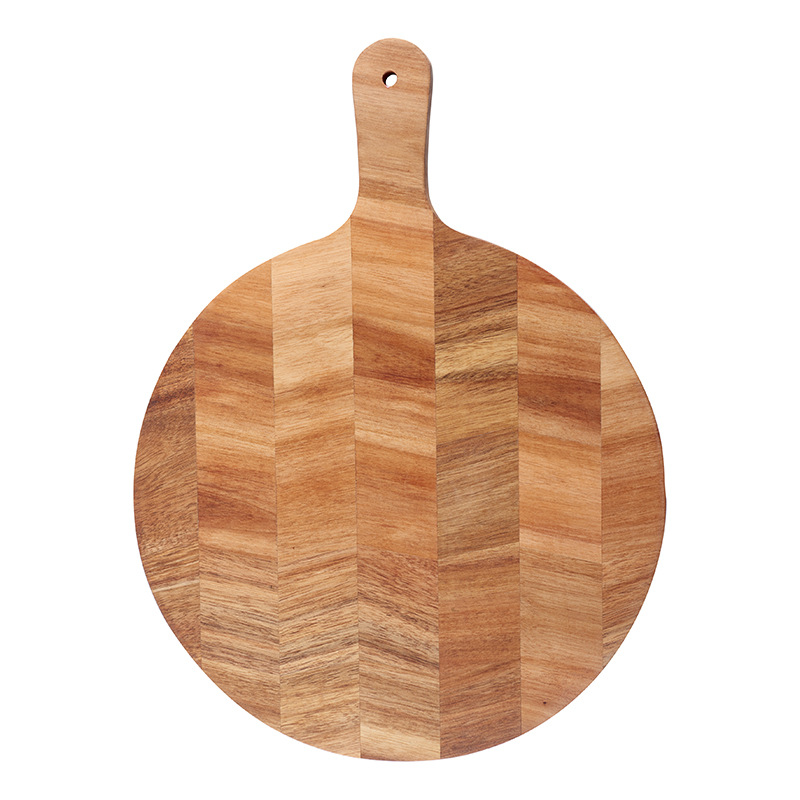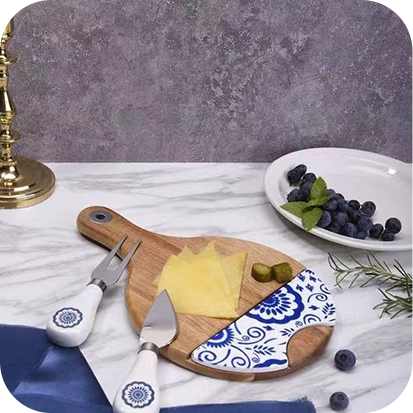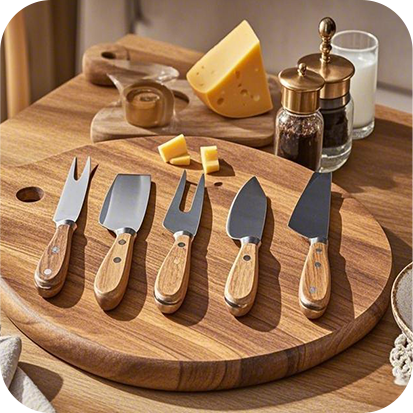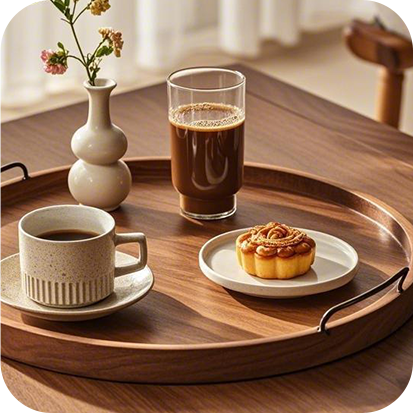From Forest to Table: The Lifecycle of an Acacia Wood Board
From Forest to Table: The Lifecycle of an Acacia Wood Board
Every product has a story, and for an acacia wood cutting board, that story is deeply rooted in sustainability, craftsmanship, and daily function. From the moment an acacia tree is responsibly harvested to its final role in your kitchen, the lifecycle of a wooden board reflects a journey shaped by nature and conscious design. This article takes you through each stage of this journey and highlights how every acacia board can become a statement of eco-conscious living.
Step 1: Sustainable Harvesting
The journey begins in managed forests, where acacia trees are cultivated using sustainable practices. These fast-growing trees are ideal for renewable harvesting, often replanted to maintain biodiversity and soil health.
Harvesting is typically done by hand or with low-impact equipment to minimize damage to the ecosystem. Only mature trees are selected, leaving younger ones to continue growing—a cycle that ensures forest regeneration.
Step 2: Ethical Milling and Processing
Once harvested, the logs are transported to nearby mills. Here, sustainability continues. Many processing facilities use solar power or water recycling systems to reduce environmental impact.
The wood is cut into boards, kiln-dried to reduce moisture content, and treated naturally without harsh chemicals. The result is a safe, food-grade wooden board that retains acacia’s natural grain and antibacterial qualities.
This is also the stage where Flip-over Plant-based Retro OEM wood cutting boards are designed—with reversibility and style in mind.
Step 3: Skilled Craftsmanship and Finishing
In workshops, artisans shape, sand, and finish each board by hand or with precision tools. The emphasis is on retaining the unique grain of acacia, ensuring every piece is one-of-a-kind.
Artisans may add functionality, such as juice grooves or ergonomic handles. Some boards like the Kitchen safe customizable Acacia wood Prep board are designed for multifunctional use, increasing their lifespan and reducing waste.
Food-safe oils are applied to seal the wood, making it durable and moisture-resistant.
Step 4: Global Distribution with Purpose
Finished boards are packed and distributed with minimal plastic and eco-friendly packaging. OEM manufacturers like us a trusted Chinese OEM manufacturer, take pride in minimizing carbon footprint by streamlining logistics.
They provide private-label services with sustainability at their core, empowering international brands to deliver green products to conscientious consumers.
Step 5: Consumer Use and Reuse
Once in your kitchen, the cutting board begins its second life. Used for chopping, serving, and presenting, it becomes part of your everyday life.
Products like the Edible-safe Personalized Acacia wood Acacia serving tray are both functional and aesthetic, doubling as décor and culinary tools.
Thanks to durable design features such as dual-sided use—seen in Both-side usable Plant-based Vintage acacia chopping boards—these boards can handle years of wear with proper maintenance.
Step 6: End-of-Life and Decomposition
When a board finally reaches the end of its usable life, it doesn’t linger in landfills. Being biodegradable and plant-based, it naturally decomposes, returning nutrients to the soil. No toxic waste, no microplastics.
Some users upcycle their old boards into serving trays or garden markers, extending their use and minimizing environmental impact.
Boards such as the Dual function Eco-safe Iconic Large acacia cutting board serve multiple roles, prolonging their usefulness and reducing the need for replacements.
Your Role in the Lifecycle
As a consumer, your purchase of a sustainably produced board closes the loop on this cycle. You’re not just buying a kitchen tool—you’re endorsing reforestation, supporting local artisans, and choosing health and sustainability.
Contact Us
Partner with us, a premier Chinese OEM manufacturer for high-quality, responsibly sourced acacia wood products.
Email: info@justwoodencuttingboard.com
WhatsApp: +86 183 1248 3616
READ MORE:
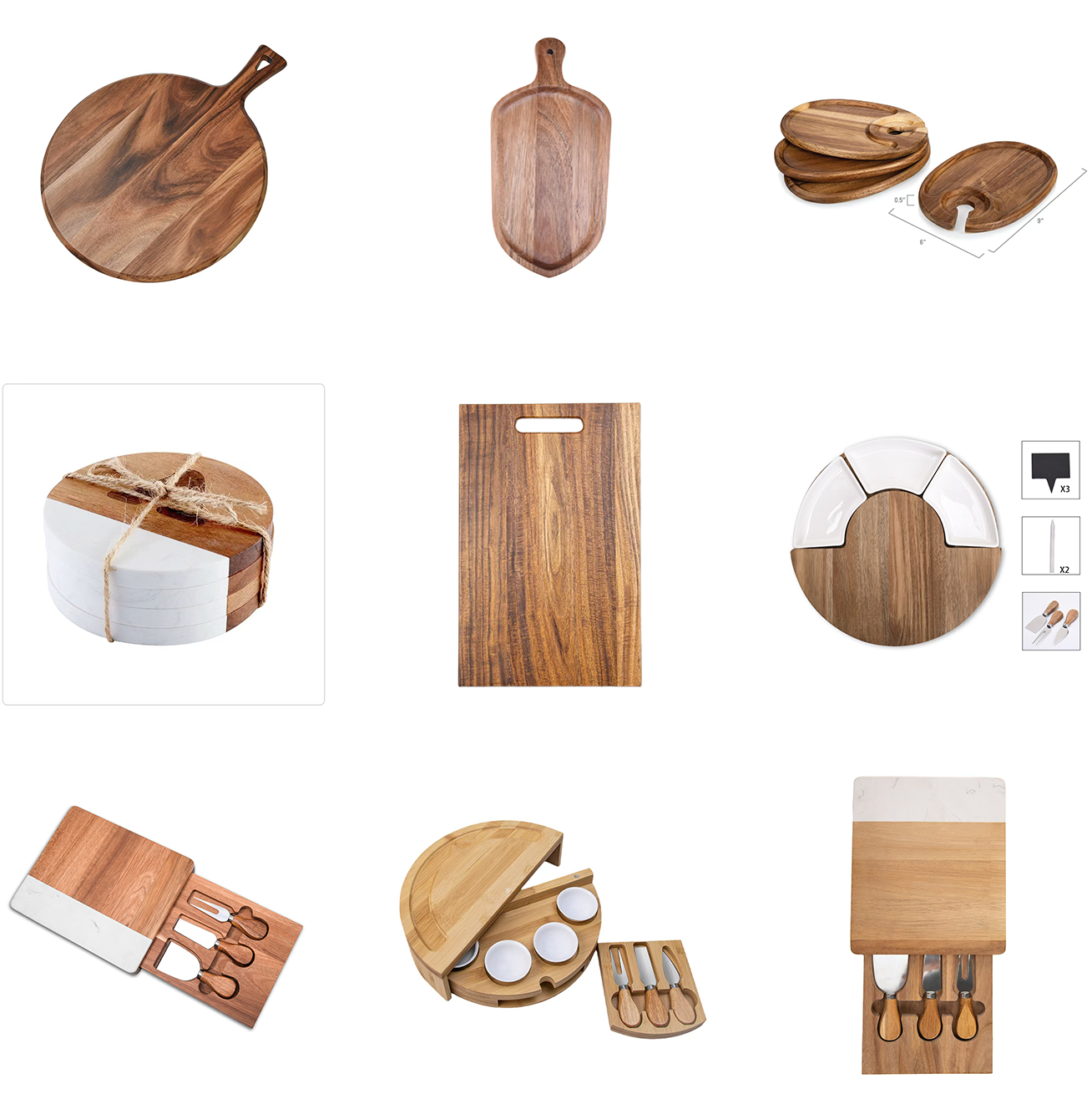

Yangjiang Cuthaven Kitchenware Co.,Ltd
Yangjiang Cuthaven Kitchenware Co.,Ltd.
specializes in the production and export of high-quality metal and wooden kitchenware. With over 16 years of experience in the industry, we have established ourselves as a trusted partner for businesses worldwide.








